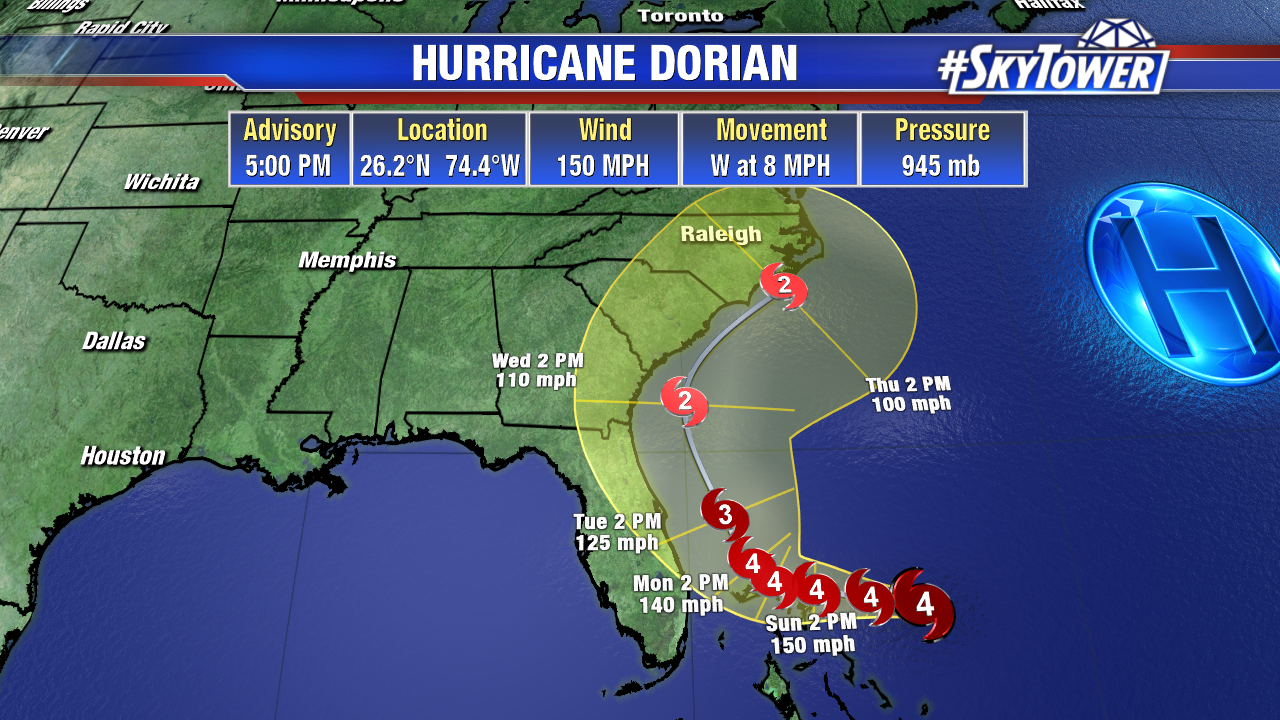As of 5pm Saturday, Hurricane Dorian was located about 170 miles east of Great Abaco Island in the Bahamas. Max sustained winds are at 150 mph, with gusts to 185 mph. Hurricane-force winds extend out up to 30 miles from the center. Dorian should be nearing the northwestern Bahamas on Sunday afternoon.
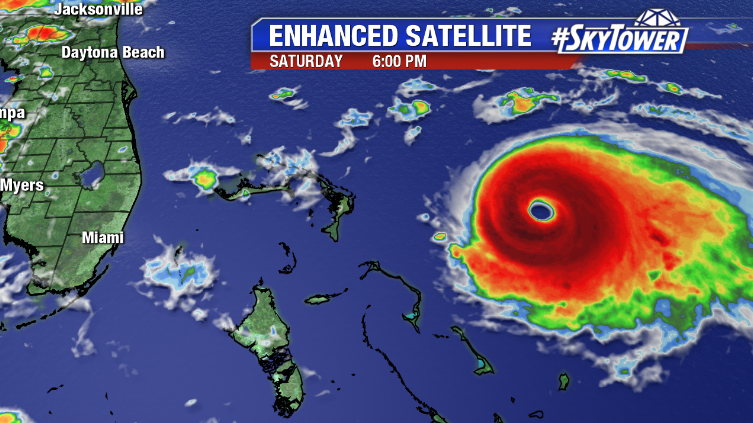
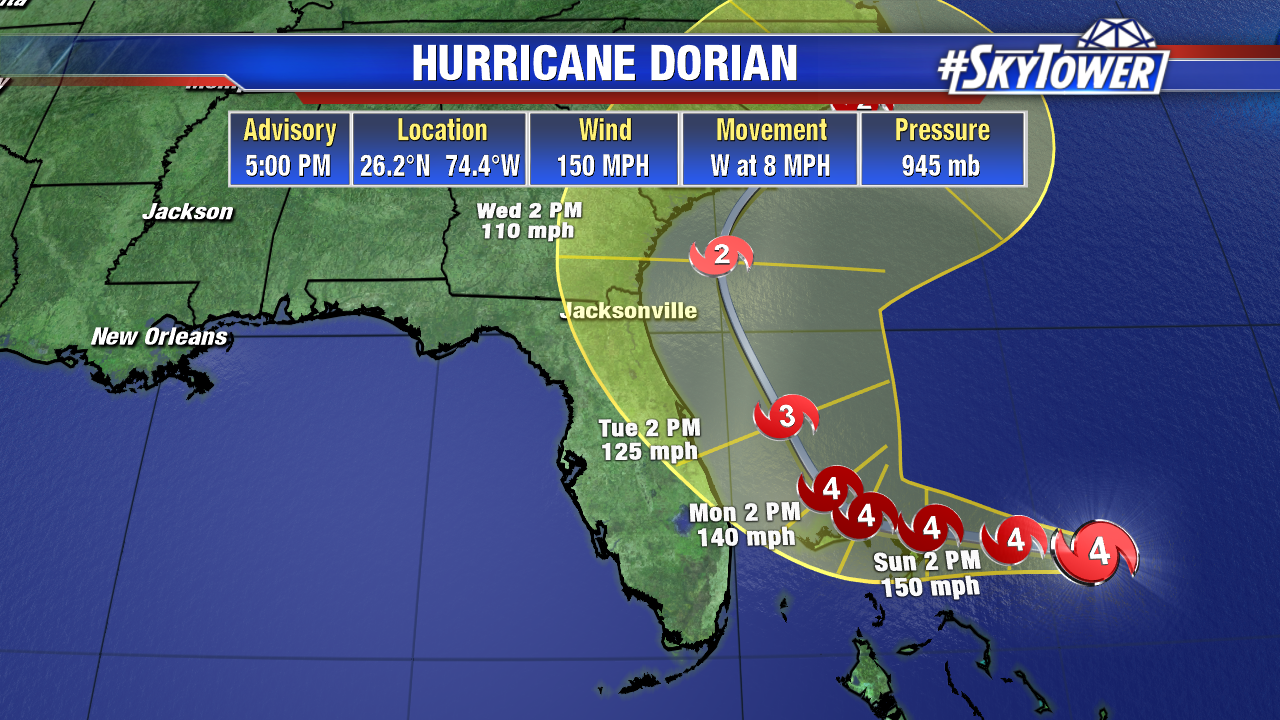
Not only is this a life-threatening hurricane, but it will be moving painfully slow once it reaches the islands. It’s quite possible, some of the northwestern Bahamas will be dealing major hurricane conditions for up to 48 straight hours, before Dorian finally picks up speed again and makes the turn north (Tuesday into Wednesday). Catastrophic damage from wind and surge, in addition to potential for up to 3 feet of rain, is becoming more and more likely in the Northwestern Bahamas.
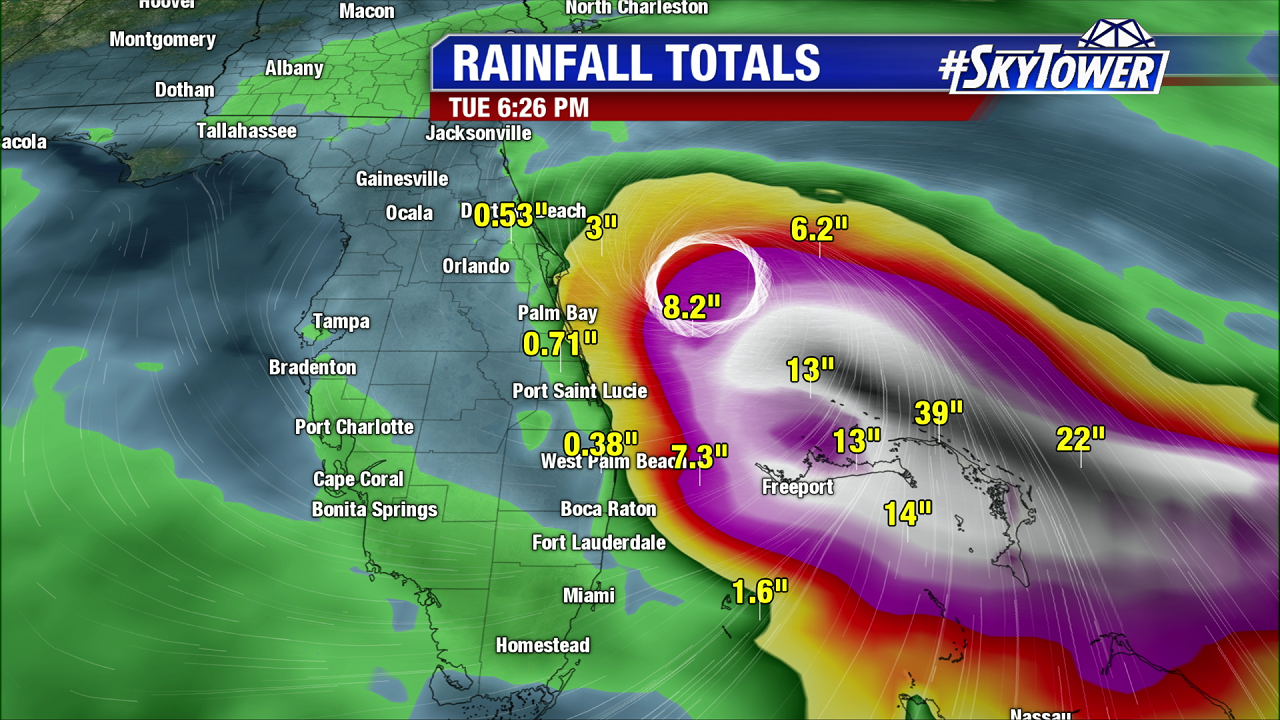
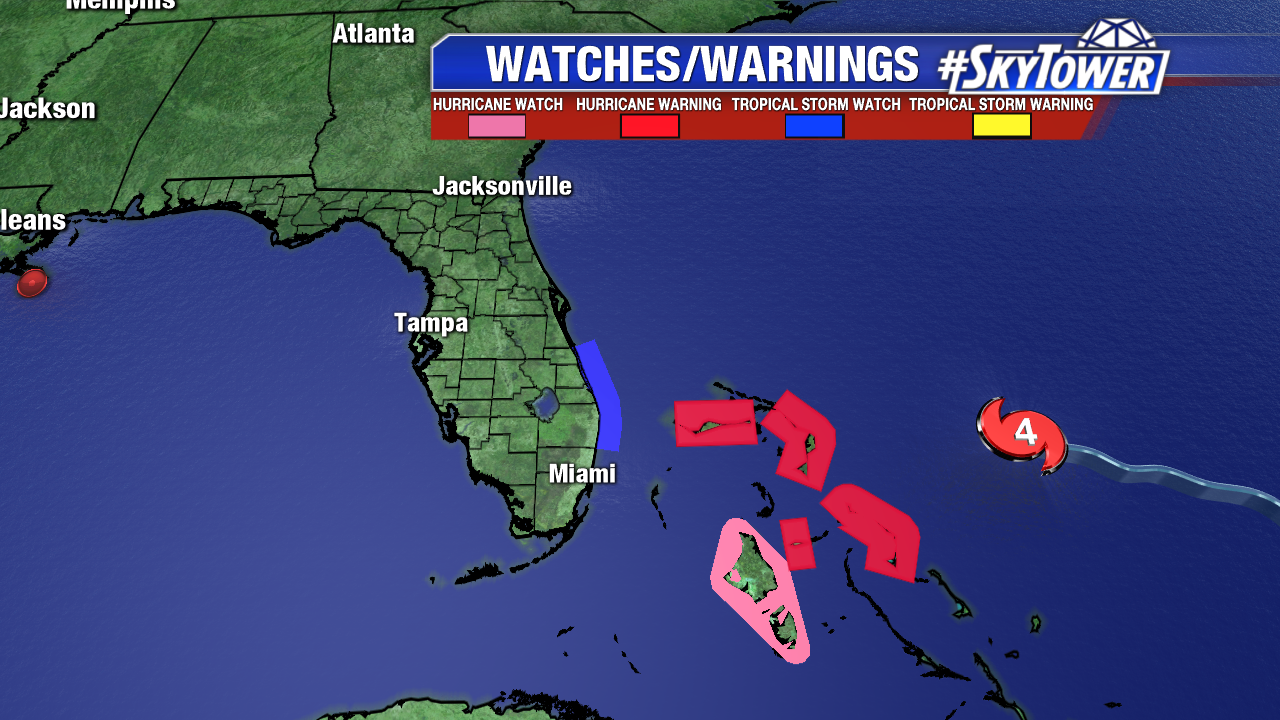
Our confidence in Dorian’s track has continued to increase today. Nearly all reliable model guidance continues to show a turn north after reaching the Bahamas, with many keeping the storm 100+ miles off of Florida’s East Coast. In this scenario, tropical storm force wind gusts and some coastal flooding would still be possible along the coast. Obviously, with a storm a powerful as Dorian there is no margin for error. At this point, we are cautiously optimistic that a Florida landfall will be avoided. However, until we see the northward turn happen, folks along the East Coast of Florida, especially from West Palm Beach northward, need to stay prepared.
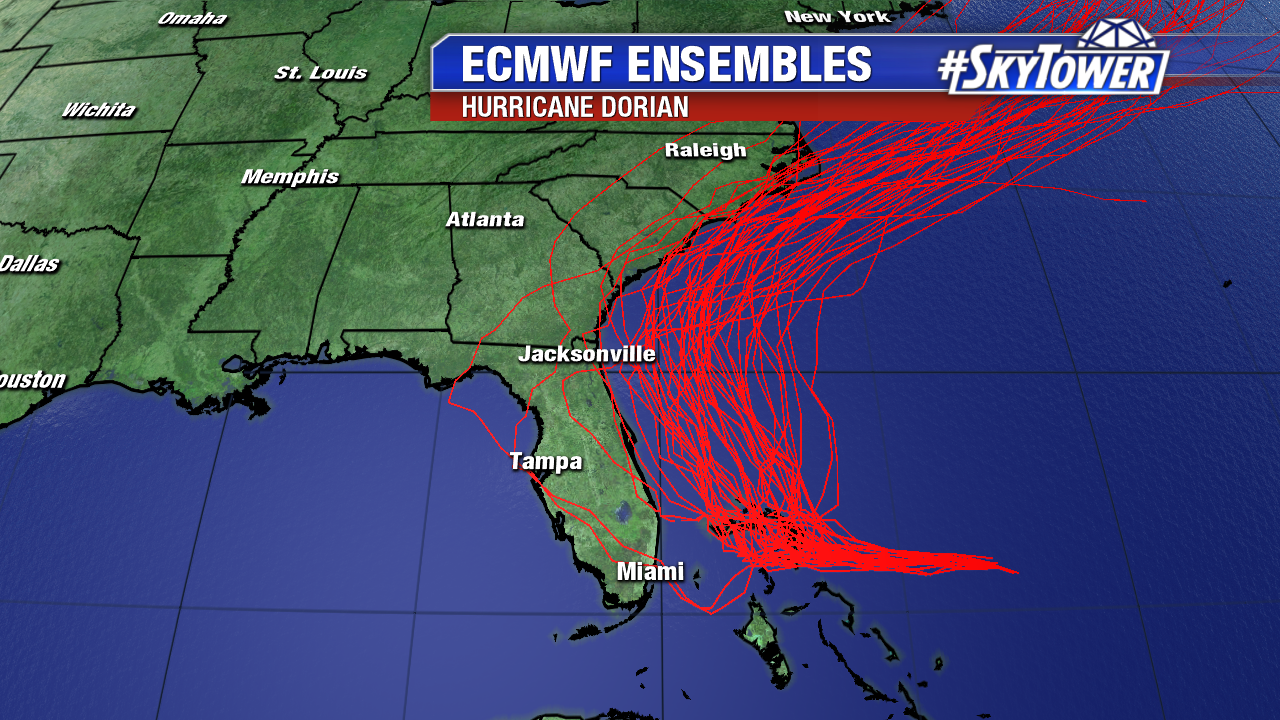
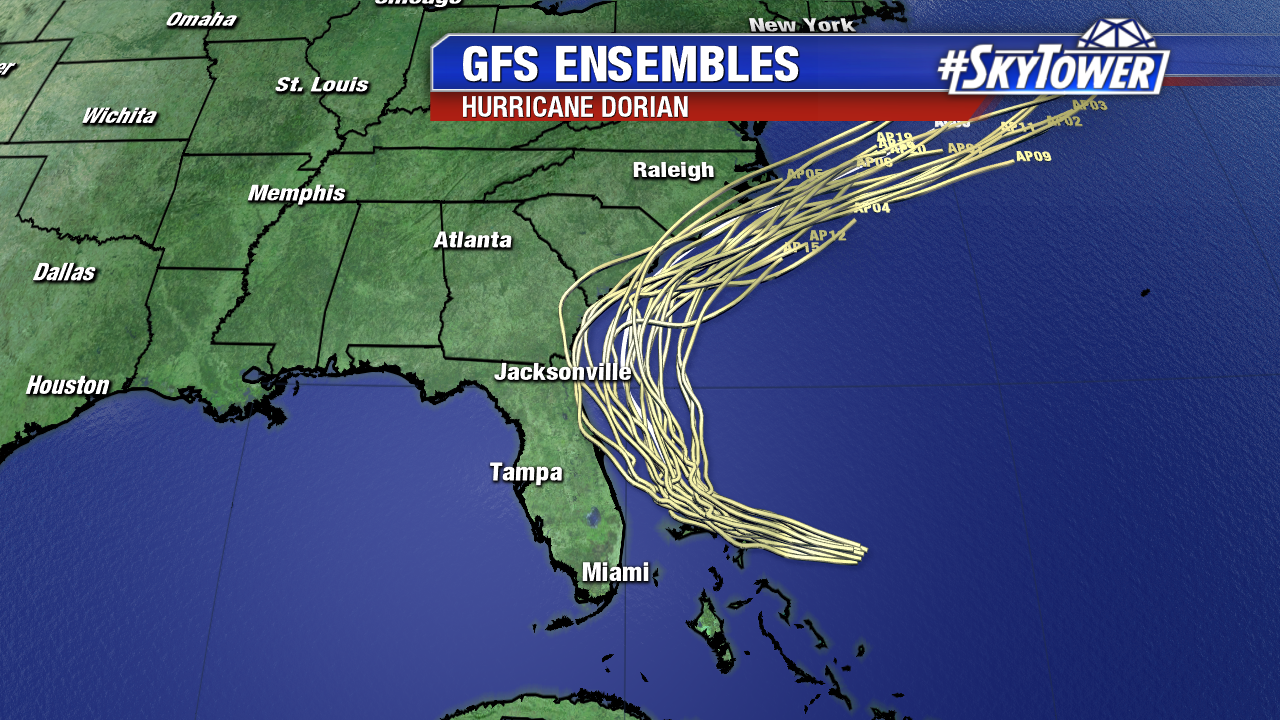
Further north, along the coast of Georgia, South Carolina, and North Carolina, there is the possibility of significant impacts from Dorian later in the week. A track offshore is possible here as well, but there is a little less model consensus at this point. Folks in these areas need to be monitoring the progress of Dorian closely in the coming days.
